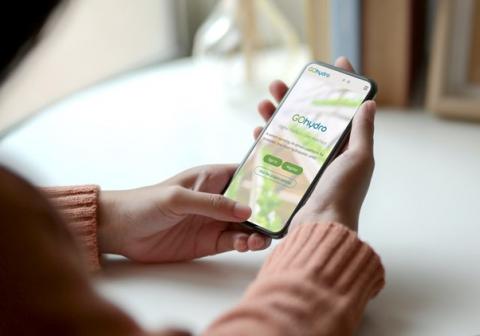GOhydro smart hydroponic unit and e-agronomist platform
One of the biggest challenges of humanity in the 21st century is to devise sustainable solutions to produce more food while minimizing environmental impact. Hydroponics has emerged as one such solution, as it requires no arable land, reduces the usage of clean water and can be used in any urban setting. Within this framework, GOHYDRO develops a cost-efficient smart-sensing ICT platform capable of monitoring the crops’ health and nutrient content of hydroponically cultivated microgreens in order to optimize the cultivation process and allow the harvest of the best possible products.
The GOhydro platform steers AI-driven technological innovation towards the development of affordable, accessible-by-all tools applicable to all forms of urban farming. In this context, the GOhydro platform incorporates a multi-modal sensor kit driven by a thorough analysis of nutritional and lighting requirements of microgreens, along with a multi-model machine learning solution that will guide growers to optimize microgreens tending in accordance with the environment where their hydroponic unit is installed and operates. In a nutshell, GOhydro offers an innovative, easy-to-use e-agronomist which will assist any grower to fine-tune and optimize their hydroponic production.

The GOhydro platform encapsulates different innovative solutions for accomplishing its described objectives, coming from different research areas and combining different agricultural and digital disciplines. Main contributions are:
- The GOhydro recipes, i.e. optimized growth profiles for the targeted plants. In essence, they are statistical multivariate correlation models that correlate nutrient, environmental and lighting conditions with the yield and nutrient quality of different microgreens.
- The GOhydro sensor kit, a set of sensing devices that incorporate nutrient-content and crop-health sensing subsystems readily available and affordable for general use.
- AI methods tailored for yield and quality prediction and plant tending recommendations in the intended usage environments. Specifically, the models take into account the peculiarity of the data in the agri-food field is that they are relatively “small” in contrast to the “big data” characteristics commonly paired to machine learning algorithms. Towards overcoming the relative scarcity of training data, GOhydro adopts a multi-model approach, where multiple shallow and deep machine learning algorithms are trained over the input data and their results are aggregated towards producing the final decision.
GOhydro is by design oriented to tackle most of the critical challenges faced for increasing the establishment of urban farming practices at a larger scale. High upfront investment, usage costs, inefficient agricultural inputs usage, complexity of cultivation practices are key problems that must be addressed in order to make indoor hydroponic installations a viable approach for urban farming at a larger scale.
The GOhydro promise relies on the exploitation of intricate AI technologies to allow simultaneously tackling all the aforementioned challenges for promoting and optimizing indoors hydroponic cultivation. The solution is based on the development of novel Machine Learning models that require minimal data volumes to be efficiently trained for optimizing growth processes and resource usage in a hydroponic installation. Additionally, their training is carried out over thoroughly researched and carefully design agricultural analysis models, paired with a broad but cost-efficient sensing solution, that combines multiple sensors for different parameters in an affordable easily installable unit. Finally, the predictive and prescriptive outcomes of the AI analysis are presented in an intuitive, explainable fashion through a user-friendly mobile application.
The multi-faceted nature of the GOhydro platform allows for further research and thus extension of its capabilities on different constituents. Indicatively, different teams can build on GOhydro innovations and contribute in the future to:
- Define and operationalize growth recipes for additional plants
- Incorporate additional measurable features and extend the GOhydro sensor kit with more sensing devices
- Incorporate their own analytical models in the GOhydro data platform
- Build user-facing applications with extended scope, particularly in the direction of connecting different installation, establish knowledge and production exchange networks
Furthermore, GOhydro itself can benefit from partnerships with unit manufacturers, sensing equipment manufacturers, product distribution networks, and other stakeholders in the broader value chain that can benefit from the platform.
